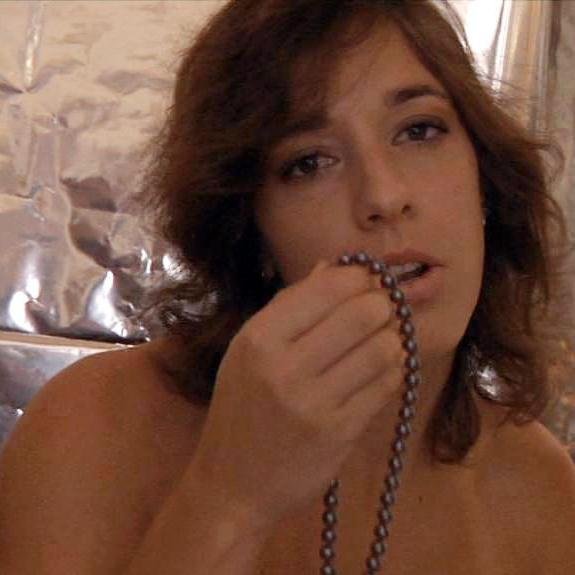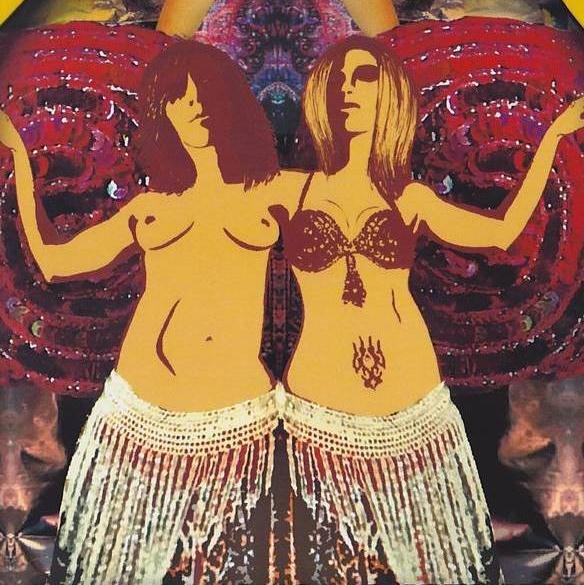PAULA-PAULA: Killing Us Softly With His Camera
The films of Jesus Franco are the ultimate acquired taste in the world of cult cinema. To some, the presence of his name on a film means "run for the hills." To others, his blend of demented artsiness and cheap smut breeds a fanatical devotion. The one thing that both camps can agree on is that he has left an indelible mark on the history of left-of-center filmmaking: with over 200 films to his credit, his legacy won't be going away any time soon. Franco remains as productive as ever today. Despite dwindling budgets and the replacement of movie cameras with digital video, he cranks away at his own cut-rate style of cinematic delirium with the same compulsive energy. Unfortunately for fans, the freedom brought by cheap digital technology has caused their idol to get even more insular and bizarre in his work. The most recent result of his current video-based style is Paula-Paula, a film that will have even the most hardcore Franco apologists struggling to explain its self-indulgent lunacy.In fairnes
Franco remains as productive as ever today. Despite dwindling budgets and the replacement of movie cameras with digital video, he cranks away at his own cut-rate style of cinematic delirium with the same compulsive energy. Unfortunately for fans, the freedom brought by cheap digital technology has caused their idol to get even more insular and bizarre in his work. The most recent result of his current video-based style is Paula-Paula, a film that will have even the most hardcore Franco apologists struggling to explain its self-indulgent lunacy.In fairnes s to Franco, he bills Paula-Paula as an "audiovisual experience," which is a fair description of its length stretches of jazz-scored visuals sans dialogue. However, he also credits Dr. Jekyll & Mr. Hyde as an inspiration and it's tough to understand where that came from. Paula-Paula's faint wisp of a plot has something to do with Paula (Carmen Montes), a crazed young woman who is apprehended by a cop (Lina Romay) for the murder of her lover/sex-show partner, also named Paula (Paula Davis).After an extremely brief interrogation, what remains is... anti-narrative madness. Paula strips down and does an extended nude dance, tells some sort of psychedelic-damaged fable and then the film settles in for its main order of business: a dancing scene that becomes a lengthy softcore bump-and-grind session between the two Paulas, filmed in
s to Franco, he bills Paula-Paula as an "audiovisual experience," which is a fair description of its length stretches of jazz-scored visuals sans dialogue. However, he also credits Dr. Jekyll & Mr. Hyde as an inspiration and it's tough to understand where that came from. Paula-Paula's faint wisp of a plot has something to do with Paula (Carmen Montes), a crazed young woman who is apprehended by a cop (Lina Romay) for the murder of her lover/sex-show partner, also named Paula (Paula Davis).After an extremely brief interrogation, what remains is... anti-narrative madness. Paula strips down and does an extended nude dance, tells some sort of psychedelic-damaged fable and then the film settles in for its main order of business: a dancing scene that becomes a lengthy softcore bump-and-grind session between the two Paulas, filmed in a slow-motion style that makes seem even lengthier and more self-indulgent than it actually is. The scene ends with a bizarre bit of violence then cuts to a curious title-card that stands in for a proper ending. Roll credits...It's hard to judge Paula-Paula from a narrative film standpoint because everything about it flies in the face of conventional critical concerns. There's no story, no characters or any kind of structure or theme that a viewer's mind can lock onto. Instead, we get 65 minutes' worth of Franco seeing how far he go with a video camera, an apartment, four actors and a handful of musical compositions by deceased composer/former Franco collaborator Friedrich Gulda. As most who have seen the film will point out, Gulda's playful, jazzy music is the best thing about the film - but that alone isn't enough to keep a viewer engaged.In short, Pau
a slow-motion style that makes seem even lengthier and more self-indulgent than it actually is. The scene ends with a bizarre bit of violence then cuts to a curious title-card that stands in for a proper ending. Roll credits...It's hard to judge Paula-Paula from a narrative film standpoint because everything about it flies in the face of conventional critical concerns. There's no story, no characters or any kind of structure or theme that a viewer's mind can lock onto. Instead, we get 65 minutes' worth of Franco seeing how far he go with a video camera, an apartment, four actors and a handful of musical compositions by deceased composer/former Franco collaborator Friedrich Gulda. As most who have seen the film will point out, Gulda's playful, jazzy music is the best thing about the film - but that alone isn't enough to keep a viewer engaged.In short, Pau la-Paula feels more like a video installation than an actual film: it's easy to imaginative it doing well as visual wallpaper in a sleazy hipster bar somewhere in Europe. However, it will become an endurance test if you try to sit and watch it. Even the extended lesbian sex scene is numbing. It's simply the compulsive creation of someone who likes to play with images and sound - and is completely unconcerned with engaging his viewers in any way. If this is the future for Franco, perhaps the time has come for him to hang up his cult cinema shoes.
la-Paula feels more like a video installation than an actual film: it's easy to imaginative it doing well as visual wallpaper in a sleazy hipster bar somewhere in Europe. However, it will become an endurance test if you try to sit and watch it. Even the extended lesbian sex scene is numbing. It's simply the compulsive creation of someone who likes to play with images and sound - and is completely unconcerned with engaging his viewers in any way. If this is the future for Franco, perhaps the time has come for him to hang up his cult cinema shoes.


